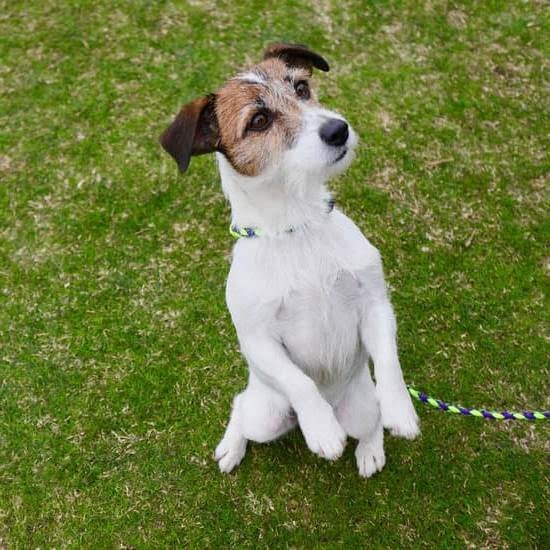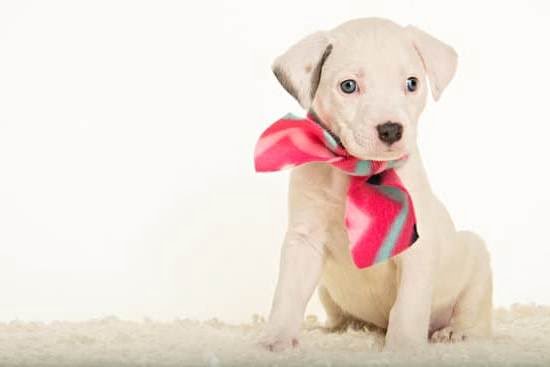Introduction
Training your dog to be like people requires an understanding of what makes your dog unique. Before attempting any training, it is important to consider the personality and temperament of your dog. Some dogs may have greater difficulty learning people-like behavior than others. Additionally, you should take into account the size and strength of your dog as some breeds need more space or guidance to learn certain commands. Furthermore, figure out what motivates your pet as every individual will respond differently to positive reinforcement or rewards for good behavior; for instance, some canine companions respond better to treats than verbal praises or physical affection. All these factors play a key role in effectively training your pup to act more human-like.
Establishing Common Ground
To teach your dog how to be like people, the first step is establishing common ground. This can mean providing the same attention, rewards, and praise to your pet when they get something right as you would a human trainee. Rewarding their efforts with positive reinforcement techniques such as treats, verbal praise, and physical affection allows them to learn faster and better during training sessions. However, it is important to note that overdoing these techniques may cause them to become dependent on food-based rewards. Therefore, start slowly and build upon each success.
In addition to using positive reinforcement techniques, consistency is key when it comes to teaching your dog new behaviors. Set some basic rules for your furry friend to follow in different scenarios so that you can stick with one approach throughout the process. Establishing a consistent routine also allows both of you time away from each other from time-to-time if needed in order for your pup focus on their learning process more effectively. Additionally, keep communication channels open throughout the learning process by being clear with what you are asking them and correcting mistakes quickly but calmly so that neither of you become overwhelmed or frustrated with the training session. Finally, make learning fun for everyone involved by incorporating interactive games into training sessions which will not only give your pup an outlet for energy but also help keep their concentration levels high while still allowing plenty of playtime.
Introducing Basic Commands
Training your dog to understand and obey basic commands is an important part of teaching him how to act like people. Start by introducing verbal and physical cues for the most commonly used words such as sit, stay, come, down, and heel. Make sure to reinforce these same words every time you want your dog to perform one of these behaviors so he can associate each word with the action. It’s also important to provide treats as rewards when your dog does what you ask as this helps motivate him to learn quickly. Additionally, try saying the command in a firm but gentle voice and use body language, such as pointing or tapping on the ground where you expect your pup to go, to help cue him in on what he should do. Of course, patience is key, so if training isn’t going well take a break and come back later when everyone has cooled off!
Establishing Routines and Rules to Follow
The first step to training your dog to behave like a person is to set up reasonable routines and rules for them to follow on a daily basis. It is important that you are consistent with these routines and rules, as it will allow your dog to learn better. Make sure the rules are realistic for the age and breed of your dog, as well as their individual personality. Your dog should have specific times each day that they get exercise, meals, bathroom breaks, and mental stimulation.
In addition to establishing certain times during the day for different activities, you should also set basic house rules that all people in the household will follow. For example, everyone in the family should agree what areas of the home are off-limits for peeing or pooping inside the home. Establishing boundaries like this helps keep order and consistency within your home life that will help when training your pup. Additionally, if there are any items in your home that you don’t want your pup getting into (like food or furniture), be sure to make those boundaries clear as well. When it comes to people’s air space or personal objects, it’s best if they stay unavailable unless invited by a human into those spaces or allowed access to those objects. Consistent reinforcement of these new rules will ensure everyone in the household can live together harmoniously while preventing any potential frustration from training mishaps.
Utilizing Treats to Motivate
Training your dog to be like people is no small feat. However, with patience and consistency, you can encourage your pup to be more human-like. One way to do this is by utilizing treats as a form of motivation. During the training session, have a few small treats on hand that you can give to your pup when they display the human-like behavior that you are encouraging. Not only will the treats act as a reward for the desired behavior, but it will also help them understand what it is that you want from them. When using treats for positive reinforcement make sure that the treat used offers an appropriate amount of nutrition and motivation for your pup to complete whatever task you are asking of them. Additionally, it is important that you show enthusiasm for their positive behaviors and words of praise will encourage them to keep up the good work! Finally, remember that just like humans all pups learn differently so try not to get frustrated if one method isn’t working; instead look at different approaches or ways of communicating with your pooch!
Sharper Focus
Teaching your dog to respond to commands is an important part of training them to be like people. To do this, you need to have sharper focus when you give the command. Once a cue is spoken, it needs to be consistent, so that your dog knows what to expect and connects the sound with the desired behavior. Be sure to reward and praise your dog each time they successfully complete a task, as this reinforces their ability to learn quickly.
For starters, master a few basic commands such as sit, stay and come. Then move on to teaching more complex behaviors such as standing or crawling. When training in stages ensure that each step is mastered before going onto the next; anything outside of this could confuse your pet and lead to undesirable results. While teaching commands identify your main challenge areas—for example if it’s difficult for your dog to remain focused for long periods of time—and incorporate drills designed specifically for them into their routine so that they gain greater control over themselves. Additionally, keeping sessions short but regular can help with building better relationships between dogs and owners just like how people connecting better through frequent contact. Lastly, consider enrolling in obedience classes or hiring a professional trainer if you feel overwhelmed by the process!
Building New Habits
Training your pup to think and behave like people takes a lot of time, patience, understanding and dedication. It does not happen overnight- but you can start teaching your canine about new behaviors or habits by using stimulation. Stimulation is defined as the use of positive reinforcement or physical guidance to stimulate a desired behavior from a dog. For example, rather than punishing your pup for getting on the furniture, provide verbal praise and treat rewards when they stay off. Alternatively, if you want to discourage them from jumping up on people when they come to visit their house, give gentle guidance and offer rewards when they sit quietly beside you instead.
The tools available for stimulating new behaviors in your pup should be used responsibly; makers of pet products such as clickers have created specialized items specifically designed for positively reinforcing training. These clickers are small enough for a canine’s mouth and enhance the learning process by providing both auditory and tactile feedback that helps denote success each time your pet succeeds at completing desired action– creating positive associations with good behavior in the process! Additionally, you may even set up special obedience classes or sessions with experienced dog trainers who can provide further insight into proper techniques when it comes to helping pooches master new skills.
Securing Tricks or Actions
Training your dog with hand signals can be a great addition to their verbal commands and make for an easier learning process. Hand signals are beneficial as they provide a visual cue for your dog and are less likely to be misinterpreted. Dogs with hearing problems may also benefit from hand signals as hearing the command is not necessary for them to understand it.
To introduce hand signals to your dog, start by picking actions that you can easily demonstrate such as sit or stay. Work on one signal at a time, repeating each one often until the association has been made between the action and the signal. Initially hold each hand signal still so that you do not confuse or distract your dog. When they respond correctly reward them with praise, treats or a toy. As they progress you can begin adding motion to your commands by sweeping left or right when indicating ‘come’ and patting down when using ‘lie down’.
Keep training sessions short and positive – strive for three separate five minute exercises a day if possible and use rewards like games, attention or food/treats that match what resonates most with them according to their temperament and personality. With regular practice you can teach new tricks quickly and efficiently with hand signals and soon enough your pup will be responding to this valuable form of communication in no time.
Incorporating Games and Activities for Fun
Training your pup to be like a person requires regular practice and dedication to ensure their good behaviour. The more you work at it, the more rewards will follow. To get started, you’ll need a variety of activities that are enjoyable for both you and your dog, such as puzzle games, hide and seek, fetch, tug-of-war, agility courses and so on. Once the basics of these activities have been established, you can use them in conjunction with verbal praise or positive reinforcement techniques such as treats.
When playing games and doing activities with your dog, be sure to set ground rules that are easy to follow and stick to them consistently. For example, if your pup is playing a game where they need to listen to commands before taking an action (such as fetch), then make sure your dog understands which actions are acceptable and the consequences for not following those commands. Additionally, work on teaching them simple life skills like “sit” and “stay” so that they better understand proper behaviour when around people or other dogs. As each of these behaviours becomes ingrained in your pup over time, they will become more like us humans – understanding social cues that are necessary in navigating our human world. Rewarding your pup with verbal praise or treats every time they display desirable behaviours will encourage them to continue being open minded towards learning new things!
Learning Together
The first step in teaching your dog to be like people is to create a positive and healthy learning environment. Establish clear boundaries and expectations for acceptable behavior before starting any training sessions. Be consistent and reward your pooch when he or she behaves in the way you asked. This will help them learn what is expected of them quickly and confidently.
The next step is to teach basic commands such as “sit,” “stay,” “come,” and “down.” Using positive reinforcement techniques – such as treats, praise, petting, or spending time together – will help your pup build a positive association with those words and increase their motivation to obey. Spend plenty of time practicing each command before moving on to the next one so that your pup can master it properly.
Once your canine companion has mastered the basics, you can move on to more advanced training tasks such as teaching them how to fetch or walk on a leash without pulling. Encourage creative problem-solving tasks that engage their minds rather than just relying on obedience alone, such as teacher them how to open a door using their paw or nose, or offering visual cues through hand signals rather than verbal ones. Teach them real-life skills like how to wait calmly at cafés or greet friendly strangers without jumping up at them! To keep their attention during longer training sessions, break up activities into smaller chunks that are more focused in order for your pup to better understand and remember what they’ve learned. With plenty of patience and support from both of you, soon enough your furry friend will be an exemplar of good manners in no time!
Keeping Your Dog Engaged and Stimulated
One of the most important things when it comes to training your dog to be like people is keeping them engaged and stimulated. To do this, it’s important to provide your dog with a variety of activities and challenges throughout their daily routine. This could include interactive toys such as a kong-style toy stuffed with treats or interactive puzzles, regular exercise to ensure they’re physically fit and healthy, playtime both inside and outside the house, solo training sessions featuring obedience commands such as sit, stay, come etc., trips away from home for socialization and training at public places like parks or beaches, and structured one-on-one sessions with you that involve rewards for good behavior. Additionally, try varying up their daily routine by changing the order of activities on certain days so that your pup finds it interesting. This will give them something new to look forward to each day and keep them engaged throughout the whole session!
Conclusion
When training your dog to be more like a person, the key is regularity and reward-based reinforcement. Reward them for behavior you appreciate and make sure that any negative behaviours are addressed swiftly. Consistency is what will help your dog learn quickly, even if they might make mistakes in between. After developing basic manners and behaviors, you can move on to more complex exercises such as obedience training, agility, scent work or play that develops their confidence.
Games such as fetch encourage interaction and reinforce the bond between you two. Allow her to do things she likes just as long as it doesn’t present a risk to anyone or anything else. The final part of training should involve socializing her with other people and dogs so that she feels comfortable in both environments — essential if your pup needs to be well behaved when guests come over! Lastly, remember that positive reinforcement goes a long way in teaching your pup new tricks; be firm but kind at all times so your pup understands what he is permitted and not permitted to do. With patience, dedication and love, you’ll soon have an obedient pup who behaves like one of the family!

Welcome to the blog! I am a professional dog trainer and have been working with dogs for many years. In this blog, I will be discussing various topics related to dog training, including tips, tricks, and advice. I hope you find this information helpful and informative. Thanks for reading!





